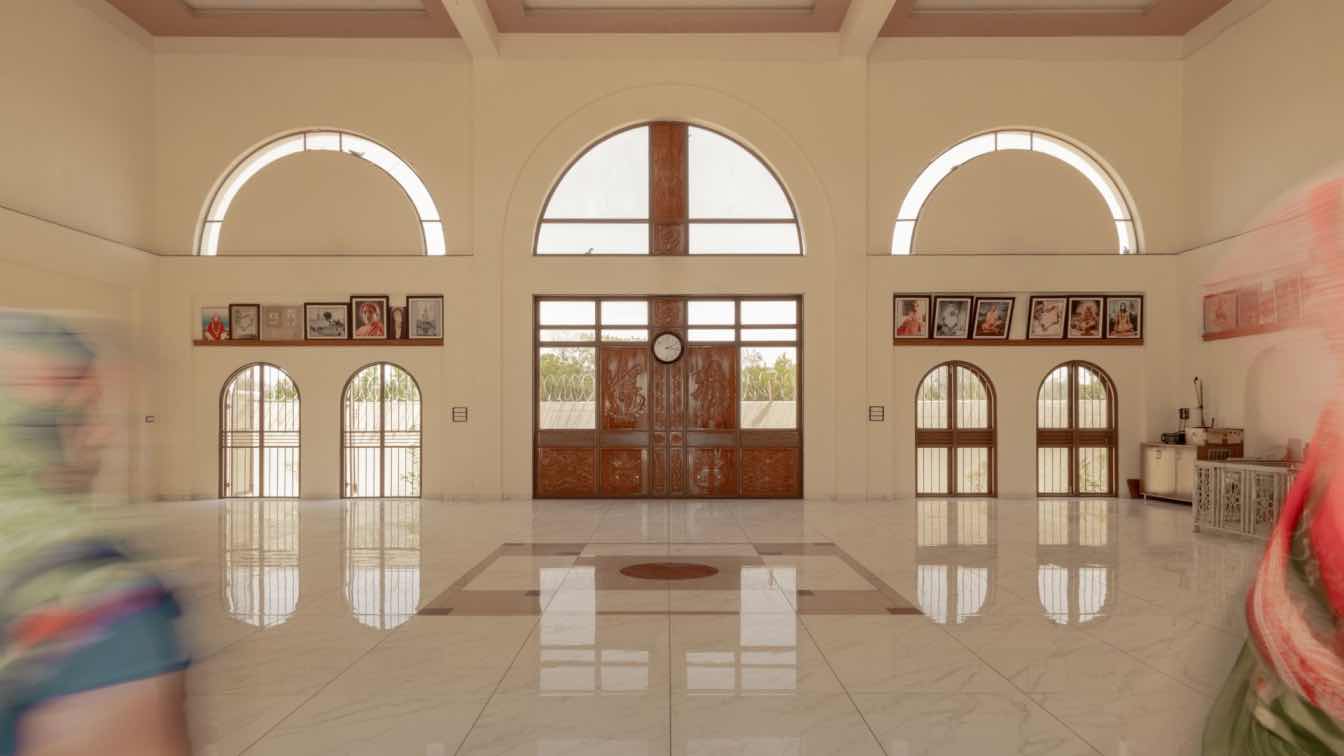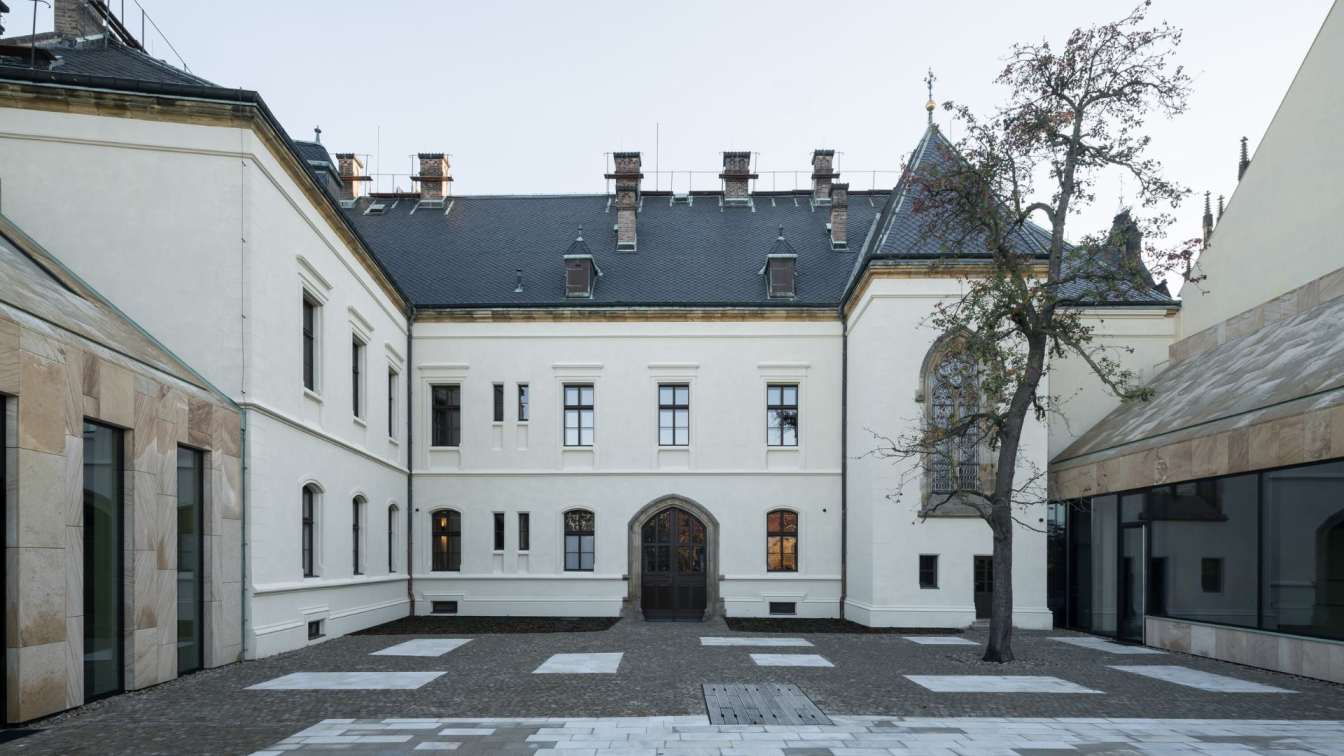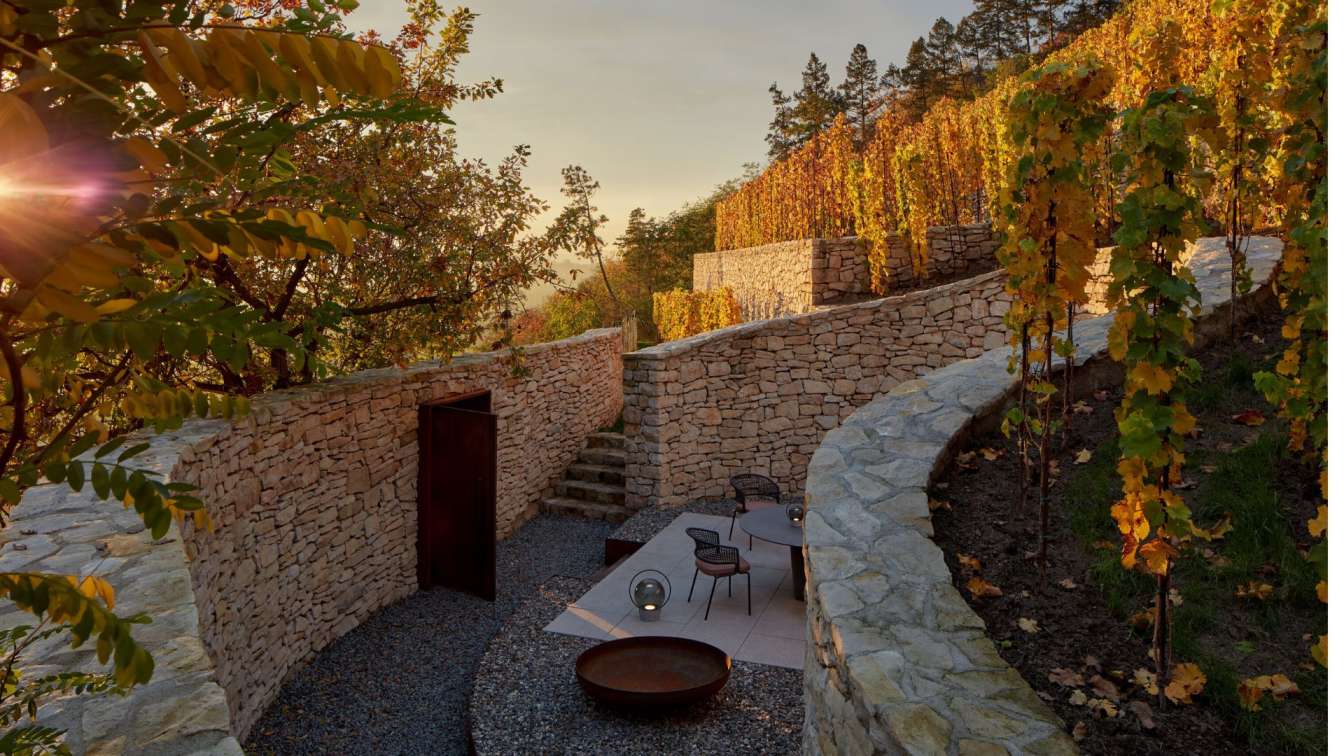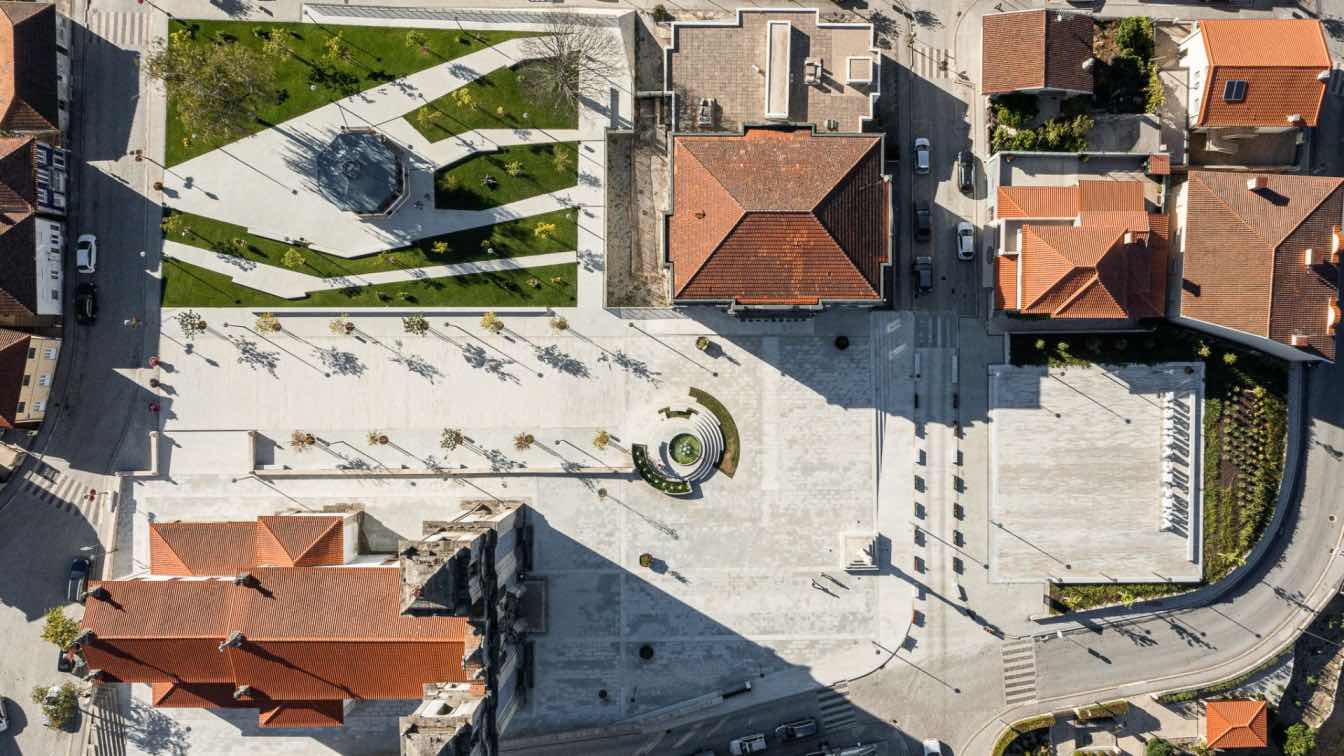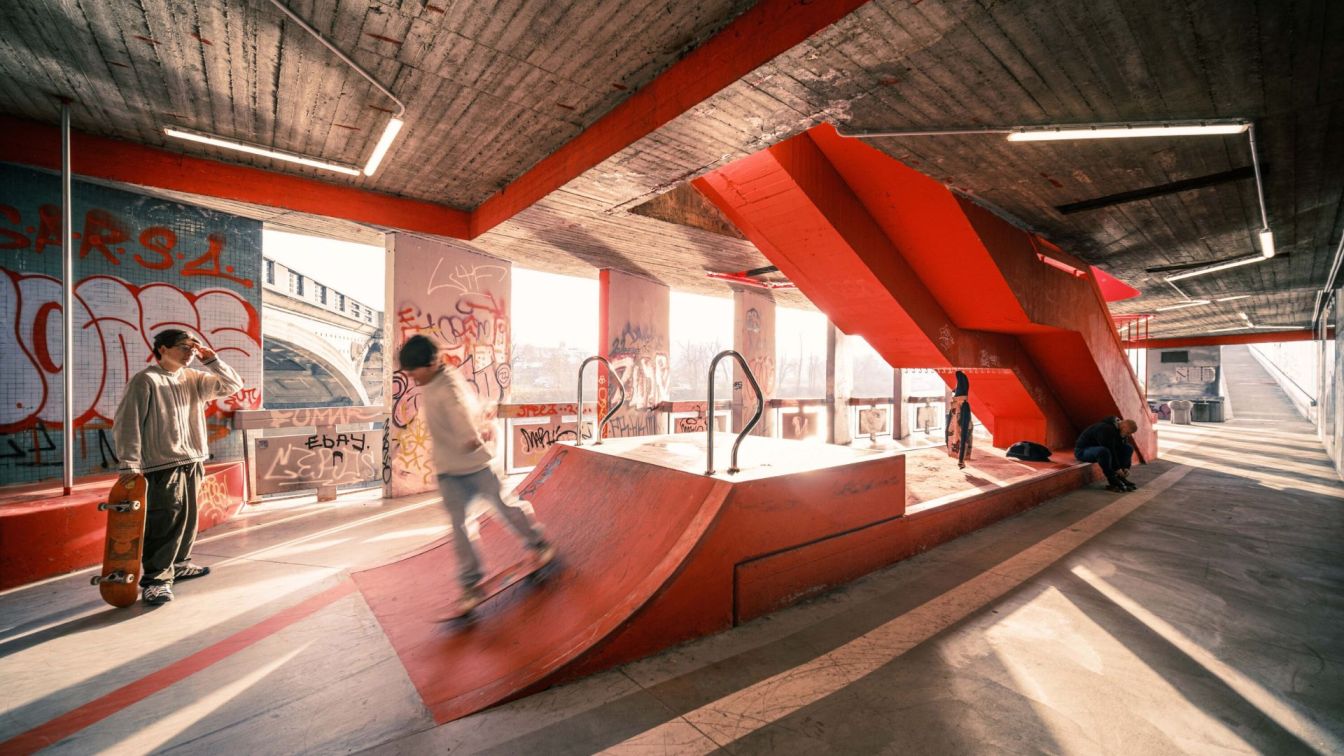Spaces of belonging : Architecture in service of community and spirit
Raasa Architects: How can architecture balance the preservation of sense of place and community identity while introducing contemporary design elements to create spaces that are both contextually significant and widely meaningful?
Architecture often finds its essence not in the grand or the monumental but in spaces that inspire belonging, community, and harmony with their context. The 16,000 sqft ashram at Nardipur, near Adalaj village in Gandhinagar, embodies this philosophy by weaving the natural environment, cultural memory, and architectural forms into a seamless experience for its visitors. Designed with reverence for its history and environment, the ashram evolves as a meditative retreat, where the landscape and built forms engage in a quiet dialogue.
The site has a profound historical and spiritual resonance. Guru Maharaj performed various ritual offerings at this location, gradually drawing disciples and pilgrims from surrounding villages. Over time, this place transformed into a living ashram that provides lodging and food for visitors. This evolution from a sacred ritual site to a community hub underpins the ashram's design, which retains and enhances the essence of its origins.
The entry is marked by a buffer zone that acts as a pause point, gently transitioning visitors inward. The entry pathway is the ashram's first architectural gesture, retaining the existing bougainvillea canopy that arches over the path. This natural feature, preserved and celebrated, creates an immersive journey that evokes a sense of serenity and anticipation. It leads visitors toward the prayer hall, revealing glimpses of the ashram’s architecture while maintaining an intimate connection with the surrounding nature. The lush landscape—dotted with chikoo trees, orange, sitafal and coconut trees as well, and an ecosystem of birds and bees—is not just incidental but integral, safeguarded as a key design principle. The ashram respects this ecosystem, ensuring no greens were removed and that the site’s inherent biodiversity thrives.

The ashram is thoughtfully planned with a sequence of primary spaces, including the community hall, lodging rooms, dining area, and the sacred fireplace, all culminating in a multipurpose open ground. This arrangement encourages a natural flow, motivating interaction, collectivity, and a seamless connection between built spaces and the expansive outdoors.
The prayer hall stands as the spiritual heart of the ashram, embodying a balance of light, form, and function. Its design draws inspiration from a symmetrical 9x9 grid, reflecting a language that resonates with the principles of Vastu Shastra, interpreted architecturally rather than religiously. The hall is oriented northeast, allowing soft, filtered light to animate the space while maintaining a contemplative atmosphere. Not all arches are left open; this selective approach manipulates light, creating an interplay of shadows that adds depth and subtlety to the design. The RCC arches, constructed using the ferma module, are structurally incorporated and slightly projected to protect glass from rain and dirt and it inevitably also offers shaded niches for birds, enriching the structure’s relationship with nature. Chamfered window edges soften the visual impact, creating thinner windows within, and enhance natural ventilation. Above, arch windows encircle the hall by becoming skylight, ensuring air circulation and preventing the heightened volume from becoming a thermal trap, while the façade slit highlights the entry point, reinforcing a sense of sacred arrival.
The hall’s subtle and creamy spatial and visual form contrasts with an symbolic structure resembling a flame, rendered in red. It is the fireplace where symbolism is woven into every aspect, from the placement of a small waterbody representing the element of water to the upward-reaching forms symbolizing air. The sacred fireplace, the metaphysical energy core of the ashram, ties these elements together, grounding the space in tradition and spirituality. This abstract representation of fire, pointing skyward, connects to the sacred act of hawans once performed here. The fireplace that stands out in its palatte and striking form, considered as the spiritual energy center of the ashram, embodies the five elements—earth, fire, water, air, and space—through its visual character, offering a profound connection to both physical and metaphysical realms.

The lodging spaces and dining area are visually and spatially connected to the community hall. While the lodging offers private retreats for visitors, the dining area encourages communal activities, reinforcing the ashram’s ethos of shared experiences. The architecture masterfully balances solid forms and open voids, creating a seamless interplay that defines the spatial experience. By breaking down large volumes into human-scaled elements, it enlivens a sense of intimacy and approachability. Simultaneously, an intentional continuity between spaces allows the transitions to feel natural and connected while keeping the architectural rhythm. This balance between enclosure and openness enhances the sense of spatial hierarchy, grounding visitors in a unified yet layered environment. The tree arches formed by drooping canopies, reminiscent of village pathways, informed the geometry of the bougainvillea-covered entry. The arches continue into the community hall, creating a cohesive architectural language. Raasa Architects emphasize the arch as a symbol of belonging—a timeless form that resonates universally and invites participation. The use of mass and volume as design tools creates a dynamic play of light and shadow, enhancing the spiritual ambiance of the spaces. Proportions and scale are carefully calibrated to evoke both intimacy and awe, ensuring visitors feel both connected and contemplative. This grounded yet intentional approach to light, mass, and void ensures the ashram’s architecture remains understated, timeless, and deeply connected to its context.
The courtyard, positioned at the heart of the ashram, serves as a contemplative pause point, balancing the openness of the prayer hall with a more intimate character. The surrounding spaces, including the dining hall and verandahs, frame the courtyard, creating a seamless flow that encourages interaction while maintaining a sense of enclosure. Visitors engage in various activities here, from cooking preparations to crafting traditional torans, making the courtyard an active and vital space. The visual continuity of the arch from the prayer hall into the courtyard ties the spaces together, ensuring that the spiritual essence of the hall permeates the everyday activities of the courtyard.

The design’s alignment with cultural practices and local ways of life ensures that the ashram is embraced as a "third place"— a space that is intentional of connection and belonging, distinct from home and work. The tower in the south, inspired by the bird towers commonly found in villages, stands as a symbolic and visual landmark. The height of the tower also protects the courtyard in the north east by creating shadows. Its presence not only anchors the ashram within its context but also resonates with the villagers, offering a structure that feels both familiar and aspirational.
The dining hall, or bhojanshala, extends the architectural narrative through its use of arches, this time positioned perpendicularly to the façade. This layout creates a sense of discovery, as the arches gradually unfold, drawing users deeper into the space and enhancing their engagement. Designed as an open, naturally lit, and well-ventilated truss structure, the bhojanshala is a communal dining experience that is both functional and welcoming. The inclusion of fixed furniture made by floor modulation not only serves the practical purpose of dining but also acts as a design element, breaking the monotony of the space and adding visual interest to the overall composition.
Material choices in the ashram reinforce its commitment to simplicity and sustainability. The
characteristic ivory walls, combined with the earthy red of the symbolic fire form, create a serene yet vibrant palette. The landscape, rather than being overlaid onto the architecture, is integrated as a layer of design. The preservation of the site’s trees and biodiversity reflects a conscious decision to honor and enhance the natural environment. The ashram at Nardipur is not a workspace or commercial entity but a volunteer-driven sanctuary for community and spirituality. It transcends functional utility to become a place of emotional and spiritual connection. The design prioritizes a sense of belonging, reflecting the architects’ belief that architecture can create profound bonds between people and their surroundings. Through its sensitive design, the ashram balances the demands of contemporary architecture with the wisdom of local and context. It is exemplary of the power of architecture to nurture the intangible—belonging, peace, and a connection to the divine. The Nardipur Ashram reminds us that architecture, at its best, is not just about buildings but about the lives and stories they witness.





























